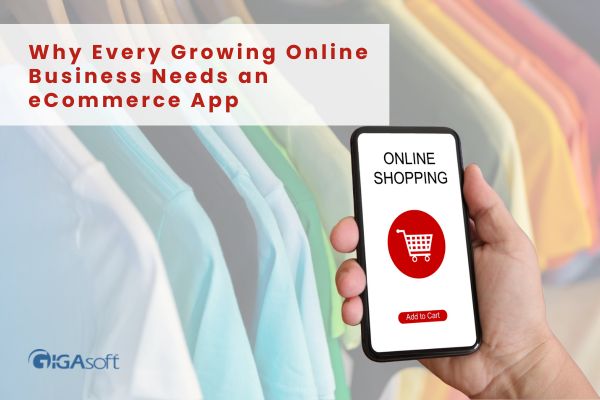Master Influencer Marketing with Key Tools 2025
Introduction
Influencer Marketing has been a game-altering approach for brands seeking to engage meaningfully with their desired audience. By partnering with influencers—those possessing a devoted and active audience across social platforms—brands are able to increase credibility and induce quality engagement. Within the rapid pace of today's digital age, consumers find endorsements from peers to be more trusted than traditional marketing, which increases the impact of influencer marketing more than ever before.
With the growing supremacy of short-form video content on platforms such as Instagram Reels, and YouTube Shorts, brands are now employing visual storytelling to quickly enthrall their audiences. These bite-sized videos, crafted in collaboration with influencers, are inducing greater engagement levels and augmenting brand recall. Whether you are a startup or an established business, incorporating influencer techniques into your online campaigns is vital for remaining competitive and relevant.
As the way people consume content changes, so does the necessity to embrace new ways—making influencer marketing an essential tool in every contemporary marketer's arsenal.
What is Influencer Marketing?
Influencer Marketing is a contemporary marketing approach in which brands partner with influencers—content creators with dedicated followers—to endorse products or services. Unlike traditional advertising, which depends on mass, impersonal messaging via TV or print, influencer marketing depends on genuine, trust-based communication. Influencers serve as accessible voices, rendering brand messages more personal and credible.
Marketing has changed considerably over the years. Social media, particularly platforms meant for short-form video content, has made audiences not just viewers but participants. This has pushed brands to adopt influencer-driven campaigns, which offer greater engagement and conversion rates.
Rather than disrupting consumers with advertisements, brands today become a part of content users already appreciate. Such has been the development that brands are increasingly investing in influencer marketing, looking for the best influencer platforms to reach niche communities and make long-lasting impressions.
Why Influencer Marketing Works in 2025
In 2025, influencer marketing remains at the top because it relies on a single driving force: trust. Consumers nowadays trust more recommendations from actual people—influencers especially—than traditional advertising. Such strong trust allows brands to create genuine connections with their audiences.
In addition, influencer-led campaigns yield strong, evidence-based results. With influencer analytics solutions in place, brands can monitor metrics such as reach, engagement, conversions, and return on investment, making each campaign measurable and optimized for achievement.
Another key driver for this growth is the boom in short-form video content. Apps like Instagram Reels, and YouTube Shorts have redefined the way audiences watch media, preferring fast-paced, short-form content. Influencer marketing platforms have kept up with the times, providing improved capabilities to match brands with creators who excel in this fast-form content mode. As consumer trends shift, leveraging these phenomena through influencer platforms is essential to remain ahead of the curve.
Crafting a Successful Influencer Strategy
- Set measurable goals:
- Set objectives like brand awareness, engagement, and conversions.
- Align the goals with trackable outcomes for effective monitoring with influencer analytics tools.
- Select the correct influencer:
- Micro-influencers for niche high-engagement groups or macro-influencers for broader reach.
- Look for influencers who share the values of your brand and target the correct audience demographics.
- Choose your target audience:
- Know the age, place, interests, and behaviors of the audience so that your influencer's fans align with your target market.
- Leverage multiple tiers of influencers:
- Pair macro, micro, and nano influencers for wide reach, greater engagement, and affordability, depending on your campaign budget.
- Develop authentic, conversational content:
- Ask influencers to create short-form video content (such as Youtube Shorts or Instagram Reels) that is natural and in line with your brand voice.
- Prioritize creativity and authenticity to establish trust with the audience.
- Use data to optimize your strategy:
- Use influencer analytics tools to monitor campaign performance, such as reach, engagement, and ROI.
- Regularly review data to refine strategies and make future campaigns even more effective.
- Interact with your audience:
- Proactively reply to comments and messages from followers of influencers to create community and enhance brand loyalty.
- Optimize campaign timing:
- Select the optimal time and platforms (such as short-form video content) to launch campaigns, leveraging peak audience engagement.
Top Influencer Marketing Platforms to Use
Select the proper influencer marketing platform to simplify partnerships and enhance campaign success.
- Best among the top-rated influencer marketing platforms provide:
- Advanced influencer search capabilities
- Direct messaging functionalities
- Campaign dashboards for managing campaigns
- Real-time performance insights
- What to consider when an influencer platform:
- A sizeable, diversified database of influencers
- Easy onboarding and collaboration tools
- Embedded influencer analytics tools to determine audience reach, engagement, and authenticity
- Trending formats such as short-form video content
- Key features to prioritize:
- Audience demographics analysis
- Authenticity checks for followers
- Campaign return on investment tracking
- Integration with several social media networks
Having a trustworthy influencer platform guarantees smooth campaign operation and optimal outcomes for brand expansion.
Using Influencer Marketing Marketplaces
Influencer marketing marketplaces bring brands directly into touch with thousands of vetted influencers, streamlining campaign setup and making it quicker and easier.
- These marketplaces make campaigns simpler by:
- Providing pre-built, ready-to-use templates for influencer partnerships
- Giving access to influencer profiles, audience insights, and influencer analytics platforms
- Simplifying communication, contracts, and payments in a single platform
- Enabling different content types, particularly short-form video content
- Advantages to small and medium-sized brands:
- Affordable access to large numbers of influencers without huge agency fees
- Easy scalability—run pilot test campaigns first before investing in bigger budgets
- Quick turnaround times for launching influencer-driven campaigns
- Opportunity to reach niche audiences with specialized influencer tactics
Influencer marketing marketplaces enable smaller brands to compete more effectively with big companies through astute, efficient, and highly targeted campaigns.
The Role of Analytics in Influencer Campaigns
- Influencer analytics software is crucial for monitoring the effectiveness of influencer marketing campaigns.
- Importance of influencer analytics tools:
- They enable brands to track actual performance and not just vanity metrics.
- Give in-depth insights into influencer credibility and audience quality.
- Enable data-driven choices to maximize future campaigns.
- Primary metrics to monitor:
- Reach: Number of individuals who viewed the influencer's post.
- Engagement: Likes, comments, shares, and saves that reflect the amount of actively engaged audience with the content.
- ROI (Return on Investment): Revenue or value created vs. influencer campaign cost.
With the aid of robust influencer analytics, brands are able to not only reach the appropriate influencers but also drive measurable, effective results.
Short-Form Video Content & Influencer Trends
Short-form video content is the most influential format for audience engagement in 2025.
- Platforms ruling the trend:
- Instagram Reels, and YouTube Shorts are at the forefront of short, bite-sized video formats.
- These platforms focus on viral, quick-paced content that grabs attention in seconds.
- Why short-form content delivers results in influencer campaigns:
- Increased engagement rates over long-form content.
- Quick storytelling resonates with shorter attention spans of today's audiences.
- Less challenging for influencers to develop genuine, human moments that resonate with audiences.
- More shareable, growing organic reach and campaign awareness.
- Heavily backed by influencer marketing platforms and influencer analytics tools to measure performance effectively
Integrating short-form video content into your influencer strategy means faster, more compelling connections to target audiences.
Selecting the Proper Influencer Marketing Platform for Your Brand
- Feature versus budget comparison guide:
- Rank platforms against your particular requirements: influencer analytics tools, influencer database size, and campaign management functionality.
- Compare pricing—some platforms bill by campaign, others by subscription.
- Seek out platforms offering price flexibility for small to medium brands.
- Key considerations:
- Ease-of-use: Opt for a platform with a straightforward interface that makes campaign setup and management easy to manage.
- Data: Accessibility of in-depth influencer analytics tools in order to measure campaign performance and optimize strategies.
- Marketplace access: Influencer platforms with a wide array of influencers across different niches, enabling you to reach the right audience easily.
The proper influencer platform should make your work easier by making influencer collaboration effortless and providing tangible, quantifiable outcomes.
Conclusion
Overall, influencer marketing has been a highly successful tactic for establishing brand trust and directly connecting with target markets. With the increasing popularity of short-form video content on social media platforms such as Instagram Reels, and YouTube Shorts, influencer-driven campaigns are more effective than ever. By selecting the appropriate influencer platform and utilizing influencer analytics tools, brands can ensure measurable outcomes and a high return on investment.
Looking ahead, influencer marketing will continue to evolve, with brands increasingly targeting niche audiences through specialized influencers and adapting to new content formats. Advanced analytics will refine influencer strategies, making campaigns more personalized and efficient. If you're ready to harness the power of influencer marketing, let Gigasoft help you launch tailored, data-driven campaigns that generate real, lasting results. Contact us today to start your influencer marketing journey!
ALSO READ:
FAQS
Influencer marketing is an approach in which brands partner with influencers—individuals who possess a loyal, active following on social media sites—to endorse products or services.
Influencer marketing establishes trust with your customers, taps into authentic endorsements, and drives quantifiable engagement and conversions, particularly with the advent of short-form video content.
Choose influencers by their audience demographics, engagement, and alignment with your brand values. Micro-influencer or macro-influencer, align with your target market.
Reach, engagement, and ROI (Return on Investment) are key metrics to monitor. Utilize influencer analytics tools to monitor these metrics and optimize your strategy.
Short-form video pieces on Youtube Shorts and Instagram Reels command attention fast, drive engagement, and encourage shareability, resulting in increased campaign reach.
Influencer marketing platforms enable brands to reach influencers, run campaigns, and leverage influencer analytics tools. They automate the process of discovering the perfect influencers and measuring campaign performance.
Absolutely! Influencer marketing marketplaces provide affordable solutions for small and medium-sized brands to reach influencers without having to pay hefty agency costs.
Influencer marketing marketplaces serve as middlemen that bring brands together with influencers. They make it easy for campaigns to run by offering influencer profiles, audience information, and payment and content management tools.
Utilize influencer analytics tools to check for the authenticity of an influencer's followers and engagement levels. Opt for influencers with actual, organic engagement instead of inflated or fraudulent numbers.
The advantages encompass access to a broad array of influencers, improved campaign management, data-driven insights through influencer analytics tools, and efficient communication, contracts, and payments.




.jpg)

.png)